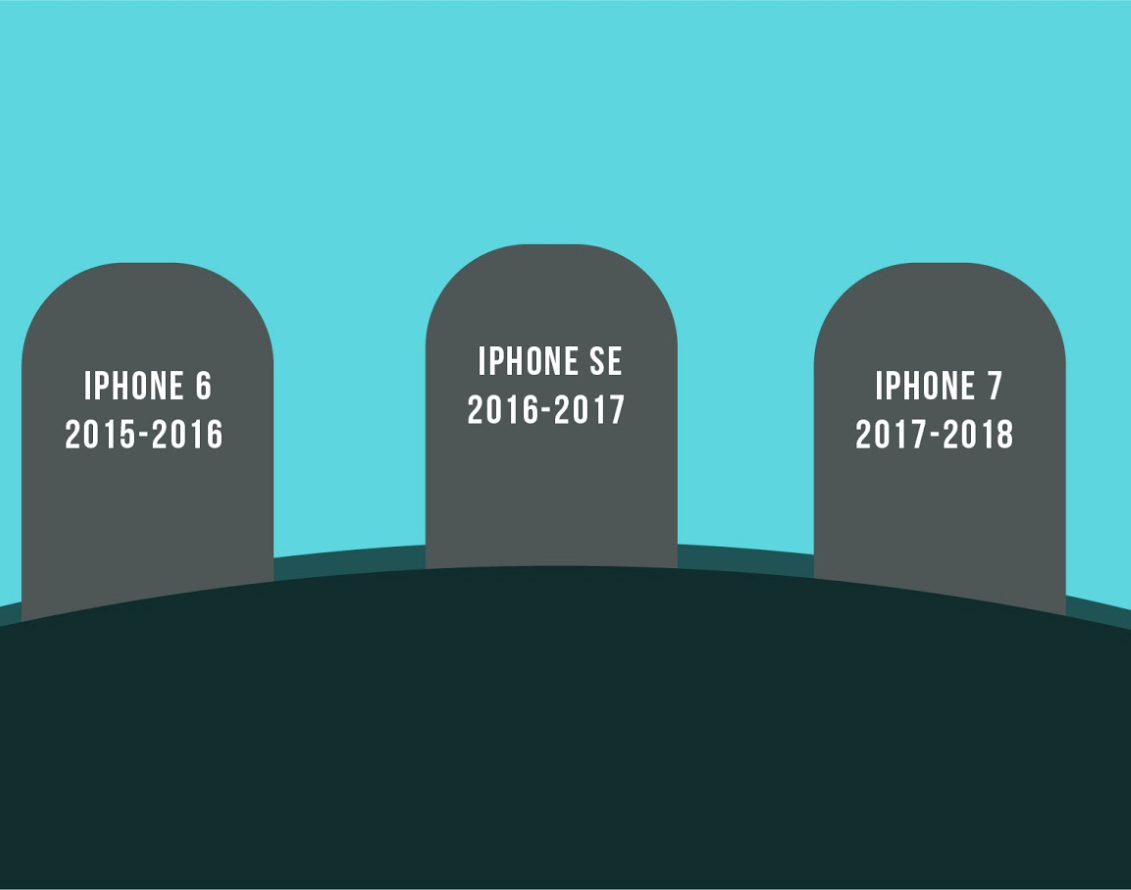We all know the drill: you buy the newest or best products out on the shelf and you take them home, bright, shiny and new. For a while, a few years even, everything is great. You take care of your product, you hope to get the best out of it. Then, the company releases a new edition. Suddenly, your product starts failing. It slows down, the battery lasts for only a few hours or the parts start breaking and you are left buying the next newest edition.
Giles Slade, the author of “Made to Break: Technology and Obsolescence in America,” defines this phenomenon, known as planned obsolescence, as the assortment of techniques used to artificially limit the durability of a manufactured good in order to stimulate repetitive consumption.
So what does this mean? Companies will plan for parts to have a limited lifetime in order to get consumers to continuously buy their newer, nicer, and generally more expensive products. Companies will purposefully make parts that break, fail, or wear over time in order to force consumers to have to buy upgrades.
Examples of this are everywhere. Light bulbs, for example, are made to fail. Some of Thomas Edison’s light bulbs are still going strong in some museums, yet light bulbs today need to be changed about once a year. Manufactures realized that by tweaking the design, they could make consumers come back again and again. College textbooks are another great example of this. The information in many new editions of college textbooks are not all that different from the edition before: a sentence here, a photograph there. Perhaps all they did was switch around the chapters or change the cover. Yet they can charge you hundreds of dollars more simply because it is a newer edition. Sound familiar yet? Video game consoles do the same thing. These companies, however, work to prevent backwards compatibility, where new games cannot be played on old consoles, but new consoles can still play old games.
Planned obsolescence is not a new phenomenon, although it has come up a lot recently. Several companies have been accused in the past of using this type of marketing technique, one of the most prominent being Apple. Many have accused Apple of using planned obsolescence to slow down older versions of iPhones, using updates or bad batteries, to force buyers to upgrade to newer, more expensive iPhones. Many companies, including Apple, use a strategy known as psychological obsolescence, where buyers are persuaded to invest in upgrades through the desire to own something a little newer and a little better before the product they own fails or wears.
So is planned obsolescence a bad thing? The answer is yes… and no. Planned obsolescence can create jobs, push for progress in technology, society, and environmental well-being, increase economic growth and create profit. But it also forces many consumers to spend money they do not have in order to keep up with the rest of society. It creates landfills of wasted parts of technology, pollutes the environment and can waste consumers’ hard-earned dollars in an economy where there often isn’t enough to go around.
There are some countries, however, that do not use planned obsolescence, or at least not at the rate that consumerist economies such as that in the U.S. use it. Many countries still repair old devices and products using tailors, shoemakers, grinders, etc..
So what should be done about planned obsolescence? Companies should adopt new marketing strategies that help the environment and answer consumer’s needs without useless or unnecessary features. Simpler and lasting products will help those who need upgraded products but who do not have the money to continuously buy the “next best thing” and will save the environment from unnecessary waste.




